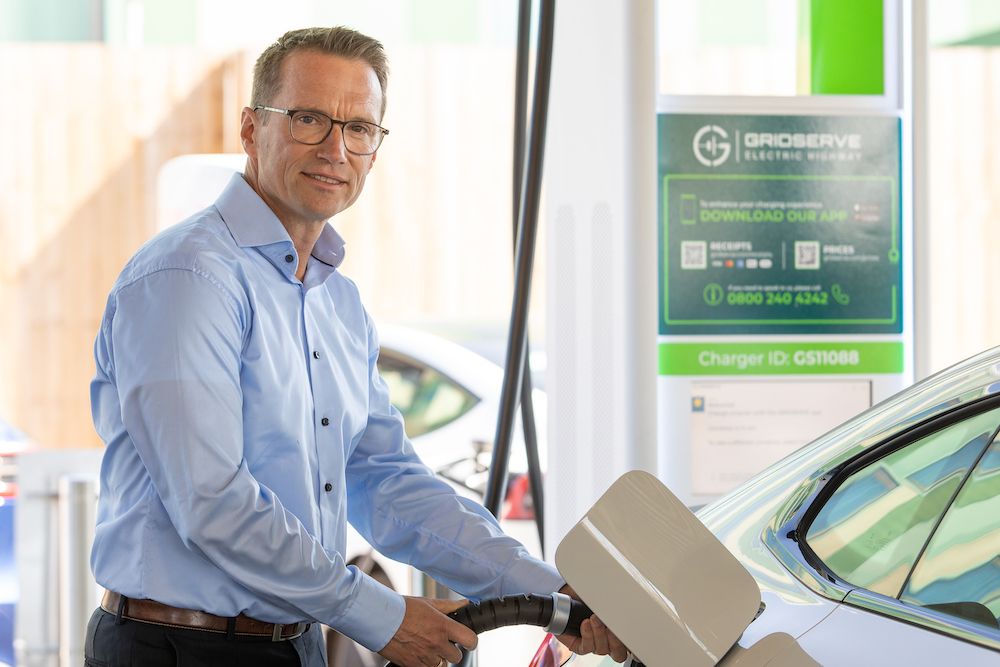Charlie Cook, founder and CEO of Rightcharge, explains why now is the right time to begin the road to the decarbonisation of fleets.
For several years, the debate around electric vehicles (EVs) in fleets centred on whether businesses were ready to be early adopters. In 2025, the conversation has shifted.
Electrification is no longer about getting ahead of the curve; it’s about staying competitive. With government policy, market momentum and cost structures all aligning, fleet managers who choose to wait risk falling behind. The question now is not “should we electrify?”, but “how quickly can we make the transition?”.
Market momentum: fleets shaping the shift
Fleet operators have become central players in the UK’s EV landscape. Businesses are not simply responding to demand; they’re actively shaping markets and infrastructure. From charging networks to the second-hand vehicle supply, fleet choices are setting the pace of change.
Recent figures illustrate the scale of that influence:
- More than 60% of EVs in the UK are now owned by businesses (2024).
- One in every 20 car miles driven in the UK in 2025 is zero-emission.
- Electric vans account for 8.4% of the total van market.
This uptake is not just symbolic. It demonstrates how fleets are driving wider adoption and normalising EVs in daily operations. As a result, the case for electrification now includes competitive positioning, brand credibility and access to emerging second-hand value chains.
Policy: the stick and the carrot
The regulatory environment is also changing fast. The UK’s Zero Emission Vehicle (ZEV) mandate is now in effect, with petrol and diesel bans scheduled for 2030 and 2035, depending on vehicle class. But the impact is being felt already, as policy creates direct financial incentives for businesses to act.
The key measures currently available to UK fleets include:
- Workplace Charging Scheme grants reduce upfront infrastructure costs.
- Benefit-in-Kind (BiK) tax relief, making EVs highly attractive for company car drivers.
- Capital allowances allow businesses to offset EV purchases against tax.
- Plug-in van grants, which directly lower acquisition costs.
In combination, these incentives create a strong pull for electrification today. Rather than seeing regulation as a constraint, many fleet operators now view it as an opportunity to reduce costs and plan strategically for the long term.
The financial case: EVs deliver savings
The financial argument has become one of the strongest drivers for fleet electrification. Total cost of ownership (TCO) calculations increasingly favour EVs, particularly when real-world operating costs are factored in.
- Running costs: On home and workplace tariffs, electricity averages around 1.7p per mile, compared to approximately 16p per mile for petrol.
- Servicing and maintenance: EVs have fewer moving parts, longer service intervals and lower maintenance requirements, reducing downtime as well as costs.
- Additional savings: EV fleets avoid charges such as London’s ULEZ or Clean Air Zones, whilst also benefiting from grants and tax relief.
Taken together, these advantages mean many EVs are already at or below cost parity with petrol and diesel vehicles. For leased vehicles in particular, 2025 is proving to be a turning point.
Environmental impact: measurable reductions
Transport remains the UK’s largest single source of greenhouse gas emissions, and fleets are often the biggest contributor to a business’s Scope 1 footprint. Electrification offers immediate, measurable reductions in line with corporate sustainability strategies.
- Zero tailpipe emissions can reduce Scope 1 emissions by as much as 60%.
- As the UK grid moves towards 95% clean energy by 2030, EVs will continue to get cleaner across their lifecycle.
- Smart charging strategies, such as shifting charging to off-peak hours, can reduce charging-related emissions by up to 30%.
- Even when battery production is included, lifetime emissions remain significantly lower than petrol or diesel equivalents.
For businesses under pressure to report on ESG performance, fleet electrification provides one of the most direct ways to show real progress.
Overcoming barriers: the blockers are falling
Historically, fleet managers have raised concerns around range, charging, cold-weather performance and safety. In 2025, many of those issues are no longer decisive barriers.
- Range: Mainstream models routinely deliver 200-300 miles per charge, with premium models offering 400-500 miles.
- Charging infrastructure: The UK now has more than 100,000 public charge points, including a growing share of ultra-rapid chargers that can add 80% charge in around 20 minutes.
- Cold-weather performance: Modern thermal management systems have cut winter range losses to 10-20%.
- Safety: EVs undergo rigorous crash testing and incorporate advanced battery management systems. Statistically, petrol and diesel vehicles are still more likely to be involved in fire incidents.
The result is that concerns which once held fleets back are increasingly manageable. For most use cases, today’s EVs are ready to deliver.
Strategic positioning: beyond compliance
The business case for fleet electrification now extends beyond compliance or cost. It is about positioning companies for a rapidly changing mobility landscape.
Early movers can secure advantages in several areas:
- Brand leadership: Demonstrating visible commitment to sustainability strengthens reputation with customers, investors and employees.
- Operational resilience: Insulating fleets from fuel price volatility and regulatory shocks provides long-term stability.
- Market influence: Fleets are already shaping infrastructure rollouts, energy demand patterns and the used EV market.
For companies with large or high-profile fleets, these benefits add up to a strategic advantage that goes beyond the immediate financial gains.
Conclusion: a decision for today, not tomorrow
The balance of evidence is now clear. Electrification is no longer a speculative move; it’s a practical, financially sound and strategically important decision for UK fleets in 2025.
With supportive policy, lower running costs and a fast-maturing market, the case for EV fleets is stronger than ever. Waiting no longer reduces risk; it increases it.
For fleet operators, the next question is not whether to invest in EVs but how quickly to roll out a transition plan that secures long-term savings, competitiveness and environmental performance.








